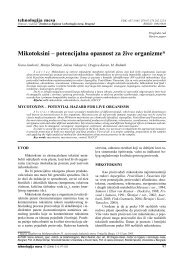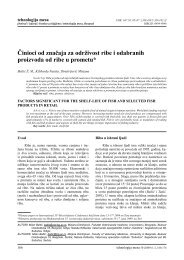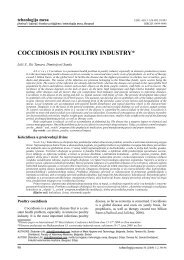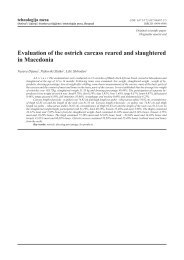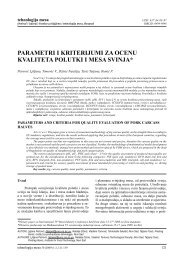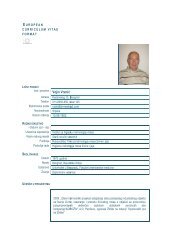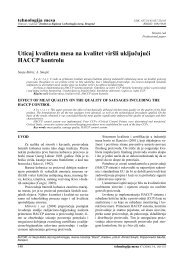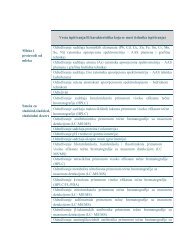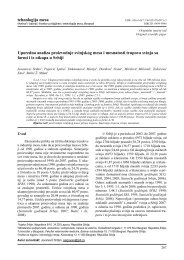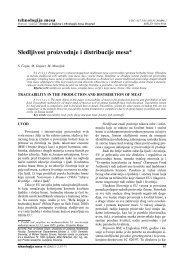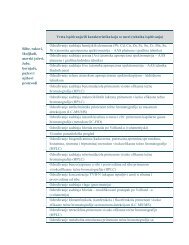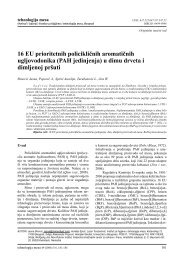korica 5-6 2009.cdr - Institut za higijenu i tehnologiju mesa
korica 5-6 2009.cdr - Institut za higijenu i tehnologiju mesa
korica 5-6 2009.cdr - Institut za higijenu i tehnologiju mesa
You also want an ePaper? Increase the reach of your titles
YUMPU automatically turns print PDFs into web optimized ePapers that Google loves.
Milićević Dragan i dr.<br />
Prisustvo plesni i mikotoksina u hrani <strong>za</strong> ishranu svinja – značaj u proceni rizika<br />
one was genus Penicillium (94,4%). The moulds from genus Fusarium were isolated in 55,5% and Paecilomyces in 44,4% of<br />
the samples from investigated localities. Other fungi from the genera Aspergillus (22%), Mycor (11,1%) and Alternaria (5,5%)<br />
were represented in a lesser amount. Polymerase chain reaction (PCR) was performed on 18 isolates of the DNA belonging to<br />
families Penicillium and Aspergillus. The sequences of PCR reaction products in three samples were compared with nucleotide<br />
sequences of genes for polyketide synthase gene (PKS) from Penicillium dance and found that the samples posessed PKS<br />
sequence. The traditional methods for identifi cation of ochratoxin-producing fungi are time-consuming and labor-intensive.<br />
Rapid and specifi c detection of ochratoxin-producing fungi is important for ensuring microbiological quality and safety of feed<br />
and food.<br />
Key words: moulds, mycotoxins, feedingstuffs, PCR, risk assessment.<br />
Rad primljen: 26.10.2009.<br />
Rad ispravljen: 14.12.2009.<br />
Rad prihvaćen: 15.12.2009.<br />
270



